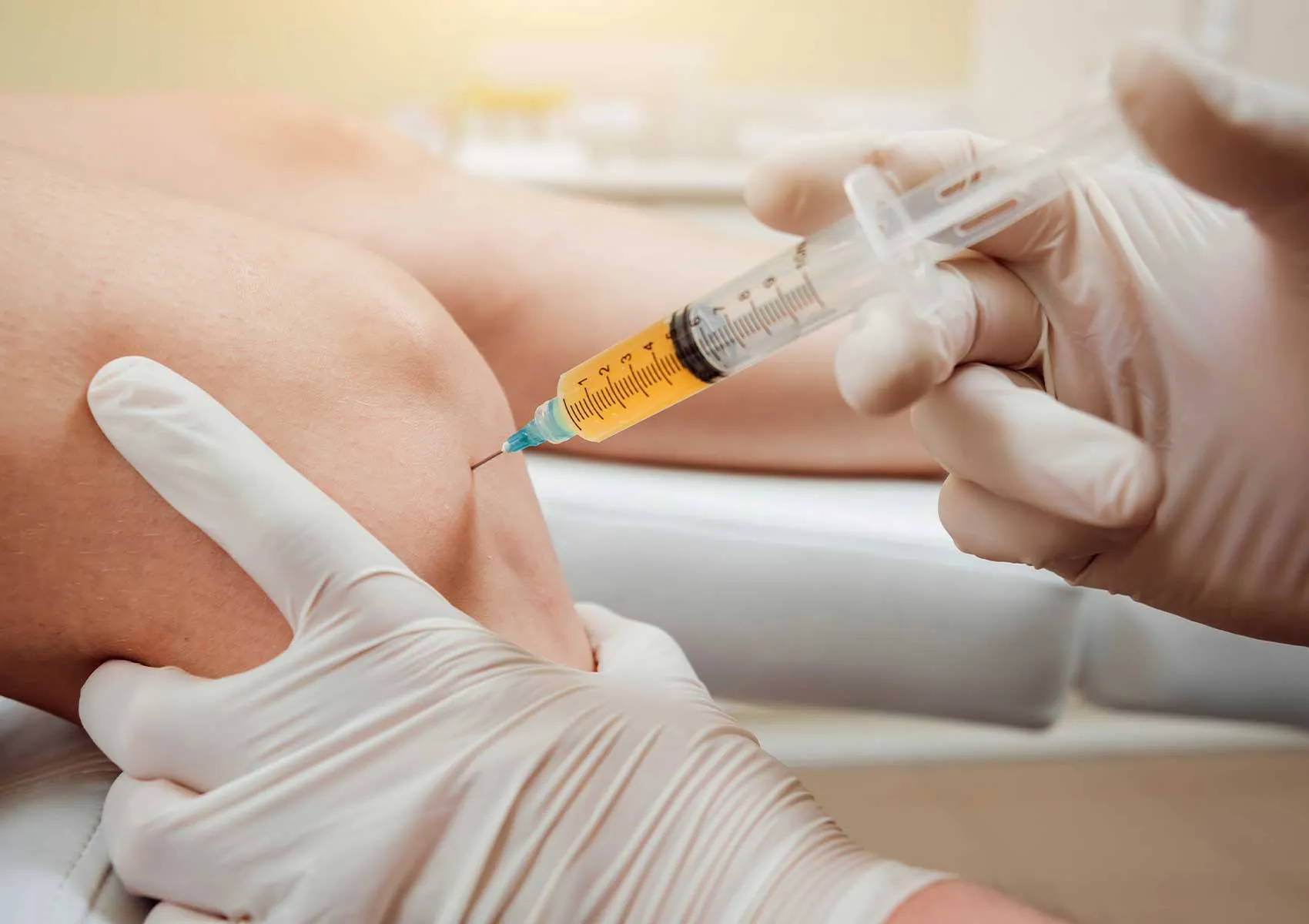PRP Treatment for Knee Osteoarthritis: Is It Effective?
A Non-Surgical Approach to Managing Chronic Knee Pain
Knee osteoarthritis (OA)—commonly referred to as knee joint degeneration—is a progressive condition characterized by the gradual breakdown of articular cartilage. It often leads to pain with activity, stiffness, limited range of motion, and joint swelling. While advanced cases may require surgical intervention, early and mid-stage OA can benefit from non-invasive treatments. One such option gaining popularity in recent years is Platelet-Rich Plasma (PRP) therapy.
But how effective is PRP for knee osteoarthritis? What do scientific studies show? Who is it most beneficial for? In this article, we take a deep dive into how PRP works, when it should be used, and how it compares with traditional treatment options.
What Is PRP and How Does It Work?
Platelet-Rich Plasma (PRP) is a concentrated form of plasma derived from the patient’s own blood. After a blood draw, the sample is processed in a centrifuge to isolate the platelet-rich layer, which contains high levels of growth factors, cytokines, and healing proteins.
When injected into an arthritic knee joint, PRP can:
- Stimulate cartilage cell activity and repair
- Improve the quality of synovial fluid
- Suppress inflammation
- Reduce pain and improve joint function
Because of these properties, PRP is particularly suitable for patients with mild to moderate OA, helping to delay disease progression and potentially postpone the need for surgery.
In Which Stages of Osteoarthritis Is PRP Effective?
Knee OA is typically classified into four stages:
- Stage 1–2 (Mild to Moderate): Cartilage wear is limited; pain increases with activity. PRP is most effective in this stage.
- Stage 3 (Advanced): Cartilage loss is significant but joint space is not completely closed. PRP may offer moderate relief.
- Stage 4 (Severe): Complete cartilage loss with bone-on-bone contact. PRP is unlikely to be beneficial, and joint replacement is often recommended.
Timing is crucial—early intervention with PRP may significantly delay progression and improve quality of life.
How Is PRP Administered?
The entire procedure is typically completed in 15–20 minutes in a clinical setting.
- Blood Collection: About 10–30 ml of the patient’s blood is drawn.
- Centrifugation: The blood is spun at high speed to separate the platelet-rich plasma.
- Injection: PRP is injected into the knee joint using sterile technique—often under ultrasound guidance for accuracy.
Most treatment protocols involve 1 to 3 sessions, spaced 2 to 4 weeks apart, depending on the severity of the condition.
What Does the Research Say About PRP for Knee OA?
Numerous clinical studies support PRP as an effective treatment for early-stage knee osteoarthritis:
- Patel et al. (2013) found that PRP produced better pain relief and function improvement than hyaluronic acid injections.
- Kraeutler et al. (2016) showed in a meta-analysis that PRP is more effective than placebo and hyaluronic acid in treating OA.
- Filardo et al. (2012) reported that PRP provided up to 12 months of symptom relief in younger patients with early OA.
- According to the American Academy of Orthopaedic Surgeons (AAOS), PRP can be considered as a non-surgical alternative for selected patients with early-stage disease.
Benefits of PRP Treatment
- Autologous and biocompatible, using your own blood
- Non-surgical and performed as an outpatient procedure
- Can be repeated without damaging joint structures
- Very low risk of allergic reaction or infection
- Can delay or reduce dependence on medications or surgery
For patients seeking a minimally invasive, regenerative solution, PRP offers a promising option.
What to Expect After the Injection
- Mild swelling, stiffness, or soreness may occur in the first 24–48 hours
- Ice application and rest are generally recommended
- Acetaminophen may be used for pain, but NSAIDs should be avoided for several days
- Normal activity can resume after 24–48 hours, but intense exercise should be avoided initially
Maximum results are often seen 2–4 weeks post-injection, with continued improvement over time.
FAQ
-
Is PRP injection painful?
Most patients tolerate the procedure well. Some may feel a brief sting or pressure during the injection.
-
How long before PRP starts to work?
Typically within 1 to 3 weeks, with full benefits observed around 4–6 weeks.
-
Is one session enough?
In some cases, yes. However, 2–3 sessions are usually recommended for optimal results.
-
Can PRP prevent knee replacement?
It can delay the need for surgery in early to mid-stage OA but cannot reverse severe degeneration.
-
Can I return to work or exercise right away?
Light activity is usually fine after 24 hours. Avoid strenuous activity for at least 2–3 days after injection.

